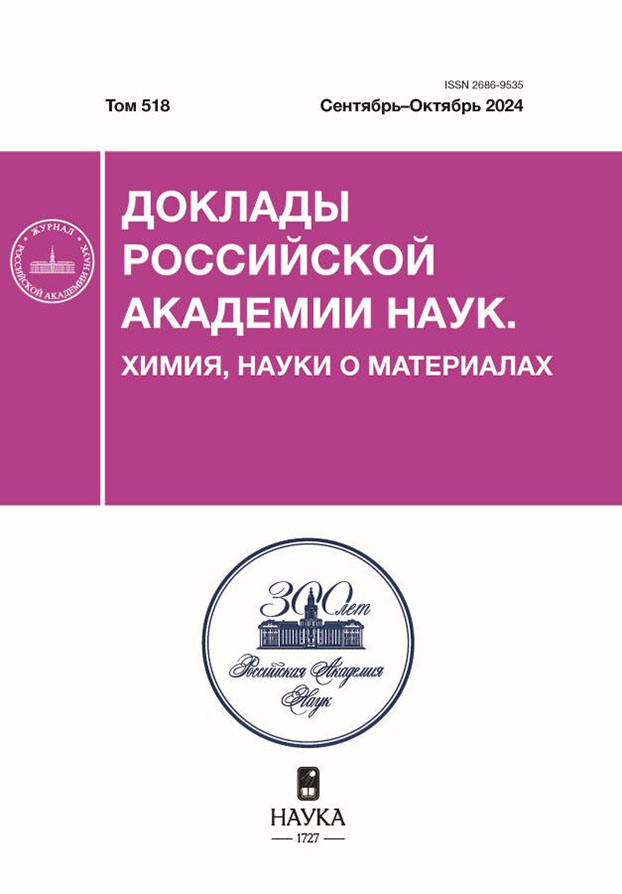Luminescence of lanthanide complexes in nano anion exchangers
- 作者: Koroleva M.V.1, Yagov V.V.1, Olenin A.Y.1, Dolgonosov A.M.1, Khamizov R.K.1
-
隶属关系:
- V.I. Vernadsky Institute of Geochemistry and Analytical Chemistry, Russian Academy of Sciences
- 期: 卷 518, 编号 1 (2024)
- 页面: 41-44
- 栏目: PHYSICAL CHEMISTRY
- URL: https://kazanmedjournal.ru/2686-9535/article/view/680960
- DOI: https://doi.org/10.31857/S2686953524050048
- EDN: https://elibrary.ru/JGSHHV
- ID: 680960
如何引用文章
详细
The possibility of using nanoanion exchangers as an organized medium for enhancing the luminescence of rare earth element complexes has been demonstrated for the first time. When a sol formed by anion exchanger nanoparticles is introduced into a solution containing thenoyltrifluoroacetone (TTA) and traces of europium(III) or samarium(III) salts, TTA anions concentrate in the ionite phase and bind rare earth cations into negatively charged complexes, which is accompanied by an increase in luminescence intensity by three orders of magnitude.
全文:
作者简介
M. Koroleva
V.I. Vernadsky Institute of Geochemistry and Analytical Chemistry, Russian Academy of Sciences
Email: olenin@geokhi.ru
俄罗斯联邦, 119991, Moscow
V. Yagov
V.I. Vernadsky Institute of Geochemistry and Analytical Chemistry, Russian Academy of Sciences
Email: olenin@geokhi.ru
俄罗斯联邦, 119991, Moscow
A. Olenin
V.I. Vernadsky Institute of Geochemistry and Analytical Chemistry, Russian Academy of Sciences
编辑信件的主要联系方式.
Email: olenin@geokhi.ru
俄罗斯联邦, 119991, Moscow
A. Dolgonosov
V.I. Vernadsky Institute of Geochemistry and Analytical Chemistry, Russian Academy of Sciences
Email: olenin@geokhi.ru
俄罗斯联邦, 119991, Moscow
R. Khamizov
V.I. Vernadsky Institute of Geochemistry and Analytical Chemistry, Russian Academy of Sciences
Email: olenin@geokhi.ru
俄罗斯联邦, 119991, Moscow
参考
- Полуэктов Н.С., Кононенко Л.И., Ефрюшина Н.П., Бельтюкова С.В. Спектрофотометрические и люминесцентные методы определения лантаноидов. Пилипенко А.Т. (ред.). Киев: Наукова думка, 1989. 256 с.
- Проблемы аналитической химии. Т. 20. Нанообъекты и нанотехнологии в химическом анализе. Штыков С.Н. (ред.). М.: Наука. 2015. 430 с.
- Долгоносов А.М., Хамизов Р.Х., Колотилина Н.К., Шайхина С.У., Евстигнеева П.В. // Сорб. хром. проц. 2016. Т. 16. № 4. С. 400–414.
- Долгоносов А.М., Хамизов Р.Х., Колотилина Н.К. // Журн. аналит. хим. 2019. Т. 74. № 4. С. 285–296. http s://doi.org/10.1134/S0044450219030034
- Nehra K., Dalal A., Hooda A., Bhagwan S., Saini R.K., Mari B., Kumar S., Singh D. // J. Mol. Struct. 2022. V. 1249. Art. 131531. http s://doi.org/10.1016/j.molstruc.2021.131531
- Blois L., Carneiro N.A., Longo R.L., Costa I.F., Paolini T.B., Brito H.F., Malta O.L. // Опт. спектроск. 2022. Т. 130. № 1. С. 207–214. http s://doi.org/10.21883/OS.2022.01.51909.35-21
- Atanassova M. // Separations. 2022. V. 9. № 6. Art. 154. http s://doi.org/10.3390/separations906015
补充文件














